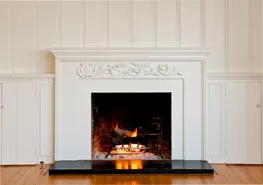When it comes to energy efficiency, nobody’s home is a perfect 10 out of 10. There’s always room for improvement and making your home more energy-efficient and comfortable all year. One of the best solutions is installing insulation.
As you’re getting ready to insulate your home, there are many factors you should consider, including the type and amount of insulation you need. The amount you need primarily depends on two factors:
- The region you live in
- The area of your home that needs to be insulated
If you’re interested in insulation services in the Miami-Dade area, Installed Building Products of Miami is the insulation contractor for the job.
Call (305) 929-8657 or contact us online for more information on residential or commercial insulation.
How Is Insulation R-Value Measured?
Insulation R-Value
R-value is an important part of insulation — it’s an indication of a particular material’s resistance to conductive heat flow. In general, the higher the R-value (thermal resistance), the greater the insulation’s effectiveness.
The R-value depends on the insulation’s type/material, thickness and density. Although a higher R-value in general means a more effective insulator, the highest R-value possible may not necessarily be right for your project. One example is if the space you’re insulating already has some insulation.
Also, houses in certain climates don’t need as much insulation as others. For example, homeowners in Alaska don’t need to worry about insulating against extremely warm temperatures — but the weather is quite different in Florida. That’s why different regions of the U.S. have different recommended insulation levels.
Areas of Your Home That Need Insulation
There are several areas in any home that require sufficient insulation to ensure a cool, comfortable, and energy-efficient environment. While this varies by region, some of the most common spaces to be insulated in Florida homes are your:
It can sometimes be hard to know what areas of your home lack insulation. You may feel temperature changes from room to room, notice drafts from air leaks or see changes to your utility bills as your HVAC works harder to keep your home cool in the summer.
It’s best to let a professional insulation contractor help identify the gaps in your home’s insulation so you can have it re-insulated properly.
Learn More About Our Residential Insulation Services
Unsure of what type of insulation you need in your home? Read more about:
- Fiberglass: Fiberglass, which has been used to insulate buildings for decades, is one of the most commonly used types of insulation. It’s made of tiny glass fibers and is available as blown-in or batts.
- Spray foam: Typically made of polyurethane, spray foam is applied wet and expands into thick foam. Spray foam insulation can be installed in crevices and hard-to-reach areas and can help reduce air infiltration.
- Core foam: Core foam, similar to spray foam, is also applied wet, but does not expand as it dries. Core foam insulation is best installed in interior parts of your home like walls to boost existing insulation effectiveness and protect from outside heat transfer.
Contact IBP of Miami to get started on your insulation installation today.
Call (305) 929-8657 or contact us online to learn more.




